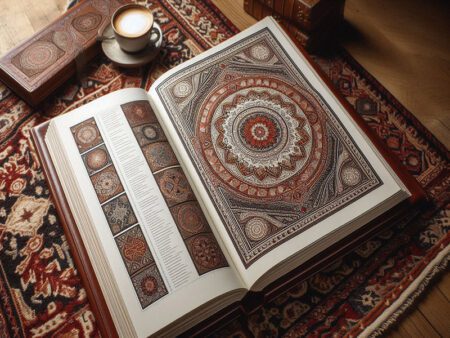
VERNA CARPET – Redesign by Parsineweb





Showing all 2 results
Tabriz is one of the important cities in Iran, located in the northwest of the country. Until the Safavid period, rug weaving was common in Tabriz, like other Iranian cities. At the end of the 15th century and during the Safavid era, the rug became more important in the royal court. In the book Rugs and Carpet of the World by Ian Bennett about rug weaving in Tabriz during the Safavid era, it is written as follows:« A large number of medallion rugs that were woven in the early 16th century during the reign of Shah Ismail and Shah Tahmasp of the Safavid era, have Eslimi designs and animal and human motifs.»
Tabriz has always been one of the most important centers of rug weaving in Iran. After the Safavid era, Iranian rugs stagnated for a while, but at the end of the Qajar period, Persian rugs were noticed by Europeans and Americans. Foreign companies from England, America, etc. established offices in Iran and ordered the most exquisite rugs according to the taste of their people. At that time, many manufacturers started weaving rugs in Tabriz.
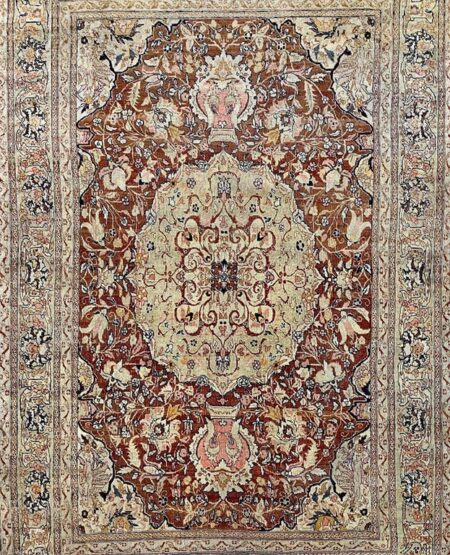
Amazing Antique Haji Jalili Rug, Dyed with Natural Dyes
Hadji Jalili was one of the most famous people who built his workshop in Marand city (68 km from Tabriz). Rug weaving was popular in this city in the past, but it reached its peak during the period of Haji Jalili. The rugs that were woven in Marand were very similar to Tabriz’s rugs in terms of design and quality, so it wasn’t easy to distinguish them. Haji Jalili started his activity in the second half of the 19th century and continued his activity until the end of the same century. He employed skilled designers, dyers, and rug weavers and produced rugs with unique designs.
Most Iranian rugs and carpets woven at that time were in blue and red colors, but Hajj Jalili used distinct and delicate color palettes. Haji Jalili rugs became famous due to the use of bright colors such as gold, copper, pink, and ivory, and for this reason, they received the attention of interior designers and decorators. Haji Jalili was a smart and experienced weaver and was familiar with European designs and tastes. On the other hand, he had entered the world of Sufism and mysticism. For these sciences, he had a thoughtful and penetrating look at Iranian rugs.
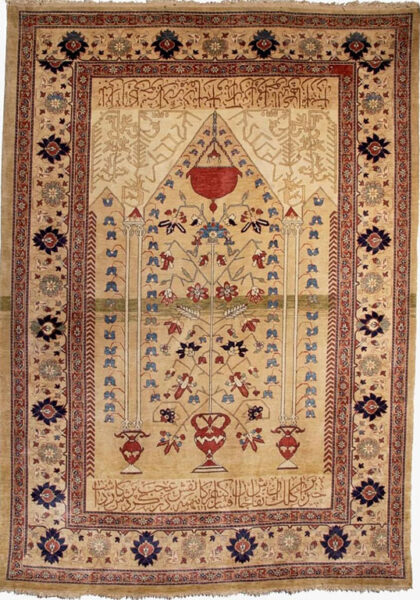
Haj Jalili ,1880 Circa
Haji Jalili was a smart and experienced weaver and was familiar with European designs and tastes. On the other hand, he had entered the world of Sufism and mysticism. The result of these sciences was the thoughtful and penetrating look he had on Iranian rugs. His rugs were often woven in large sizes and were of very high quality. These rugs were bought by collectors and wealthy people. Today, the price of some of Haji Jalili’s large rugs reaches more than 200,000 dollars and they are sold at Christie’s and Sotheby’s auctions.
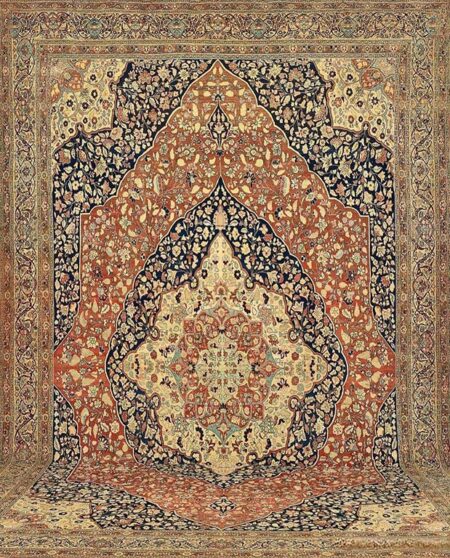
Haji Jalili Tabriz ,145 year old,12’5″*19′
Haji Jalili rugs often feature all-over or medallion. In most of these rugs, you can see the designs of Lachak-Toranj, Herati-Fish, and Tree of Life, with Eslimi (arabesques) motifs, which are used on a simple background floor. Also, all kinds of willow, cypress, and palm trees can be seen in abundance on the edge of the rug and its background. Hadji Jalili’s smaller rugs have a mihrab (Prayer) design, which is covered with all kinds of flowers, trees, and birds inside the mihrab.
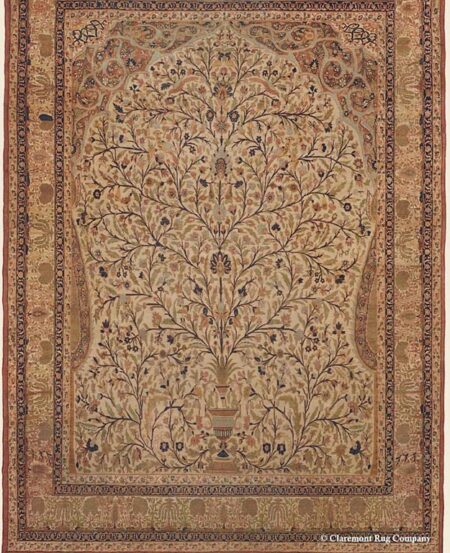
Hadji Jalili Tabriz Mihrabi Design,9’4″*12’7″
These rugs often feature intricate vine-shaped medallions and miniature flowers that indicate deep thought for each design. Haji Jalili’s “Garden of Paradise” design is one of the world-famous designs of this master.
Haj Jalili had an extraordinary ability to use subtle colors. The background color of his rugs is often copper. Of course, ivory, midnight blue, gray, green, and gold colors were also used for the background.
Hadji Jalili rugs are woven with high-quality fine sheep wool and a cotton base. Of course, there are also small samples of silk among his rugs. It is interesting to know that, unlike other rugs of that period, selvage of rugs were made of cotton. The knot density of rugs reaches about 50 knots per 7 cm or 300 knots per inch. This shows the high density of Haji Jalili rug knots. The knot of all these rugs is the Turkish(symmetrical)knot.
Today, Haji Jalili Tabriz’s rugs and carpets are considered to be antique rugs due to their high artistic value, and that is why they have a high price. These rugs were made in the 19th century, but people still wanted to have such colorful and elegant rugs in their interiors. Hadji Jalili managed to leave a limited number of masterpieces and write his name in history, even centuries will pass, and the value and fame of his rugs will continue to increase.
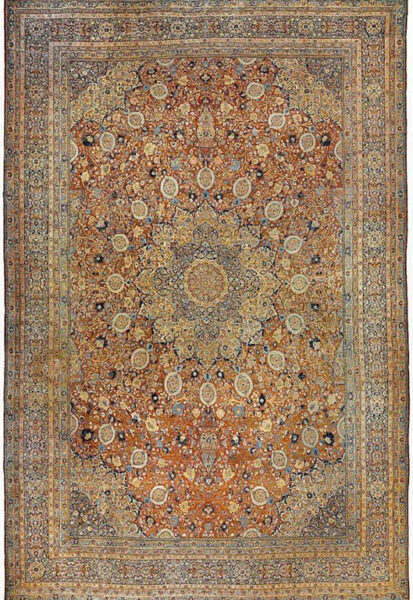
Tabriz Hadji Jalili Carpet,19’*28′
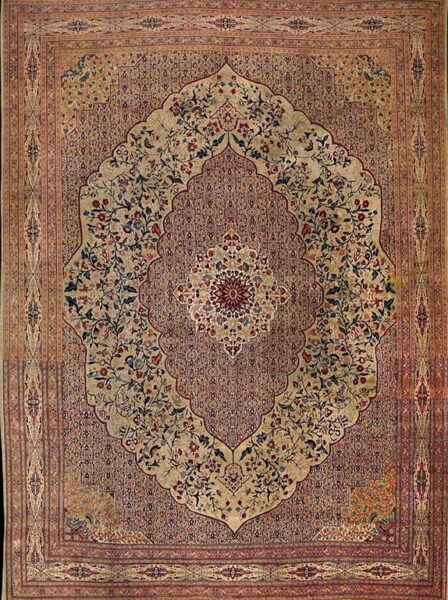
31.5 square meters, Antique Hadji Jalili Tabriz Rug
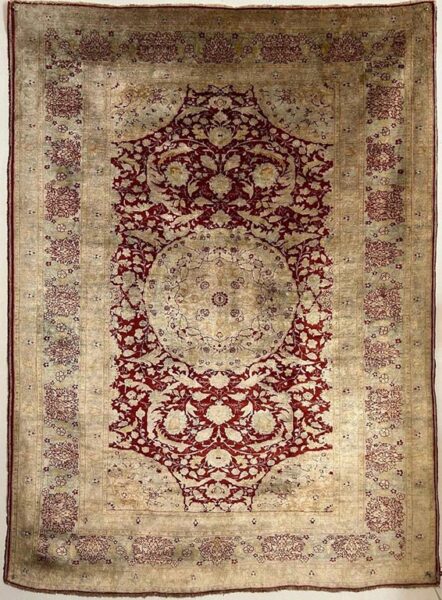
Haji Jalili Silk Tabriz Rug,Circa 1900,118*162 cm
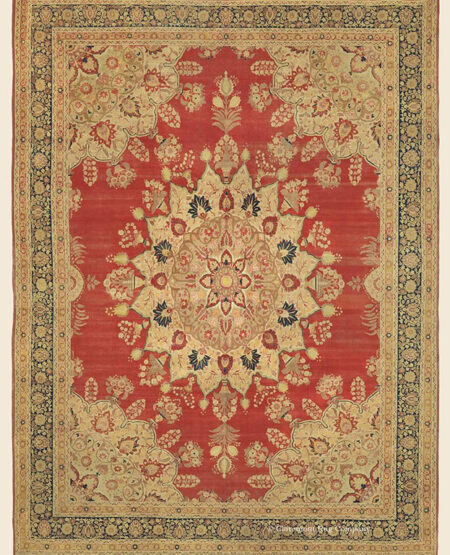
Tabriz Haji Jalili Rug 10’10″*14’4″, Circa 1875
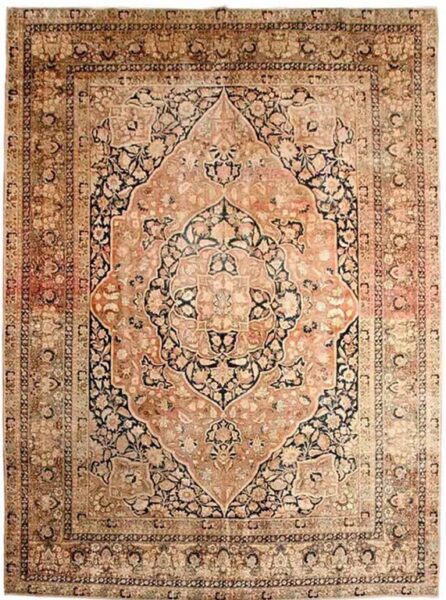
Tabriz Persian Haji Jalili ,Circa 1880,9’8″*14’2″